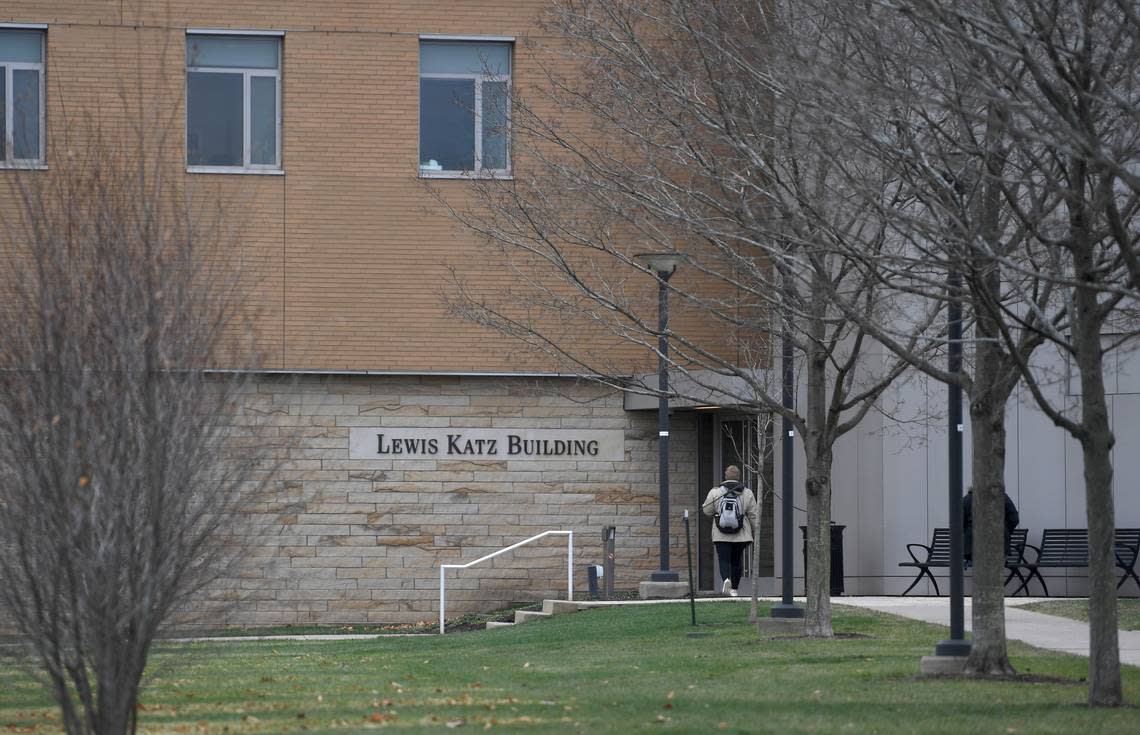‘Reunification’ of Penn State’s law schools takes next step; set to reduce faculty, staff

Nine months after Penn State’s president recommended “reuniting” the university’s two separately accredited law schools, Penn State announced Monday that an appointed panel has formally offered recommendations on the yearslong process — with a “substantial presence” expected to remain at University Park.
The university acknowledged there will be “some reduction in faculty and staff positions,” although the extent was not immediately known.
According to a news release issued Monday, the university’s single law school will be called Penn State Dickinson Law, and its primary location will be in Carlisle. Both the Carlisle and University Park campuses will still have residential student cohorts and will allow students to receive degrees at either campus, with class size being optimized over time.
The reunited school will focus on “innovation and leadership” in hybrid and remote instruction, per the release, and it is considering new offerings — such as a master of legal studies (M.L.S.), a one-year program for non-lawyers that could be delivered remotely.
“The work to reunite these schools is still just beginning, but I am excited about the future we are building for legal education at Penn State,” university President Neeli Bendapudi said in a written statement.
A 14-person panel — comprised of seven members from Penn State Dickinson Law and seven from Penn State Law — met weekly since January to discuss the recommendations. According to the university, every member supported the final recommendation that was shared with Bendapudi in May. (After seeking other counsel, Bendapudi accepted the recommendations in late July.)
The “reuniting process” is expected to take several years, with the university acknowledging that the procedure will be defined by leadership from the two law schools and the American Bar Association. Both Penn State Dickinson Law and Penn State Law will continue accepting applications for fall 2024 admissions.
Danielle Conway, the dean at Penn State Dickinson Law, acknowledged this is a period of significant change for law schools in general.
“I view bringing together Penn State’s two outstanding law schools as a crucial step in meeting the challenges facing the legal academy and the legal profession in preparing the next generation of lawyer leaders for society,” Conway said. “I am looking forward to working with my colleagues at Penn State Dickinson Law and Penn State Law to put this plan into motion and begin the process of building an even stronger law school for our students, staff, faculty, administrators, the university and the commonwealth.”
A previous administration originally separated the law schools to promote flexibility, believing two independent schools with different deans and administrations could better respond to a rapidly changing legal profession. One school was meant to focus on niche specialties, with the other centered on creating “practice-ready” attorneys.
The Dickinson School of Law was founded in 1834 — 21 years before Penn State — before merging with the university in 1997. In 2006, the Dickinson School of Law University Park opened as part of a two-campus law school until 2014, when the two began operating independently as separately accredited entities.
Penn State has said the “reunification” — officials have consistently insisted it’s not a closure — would lead to “significant” savings. The reunification must also be approved by the American Bar Association and the university’s board of trustees.


